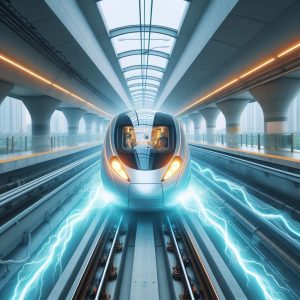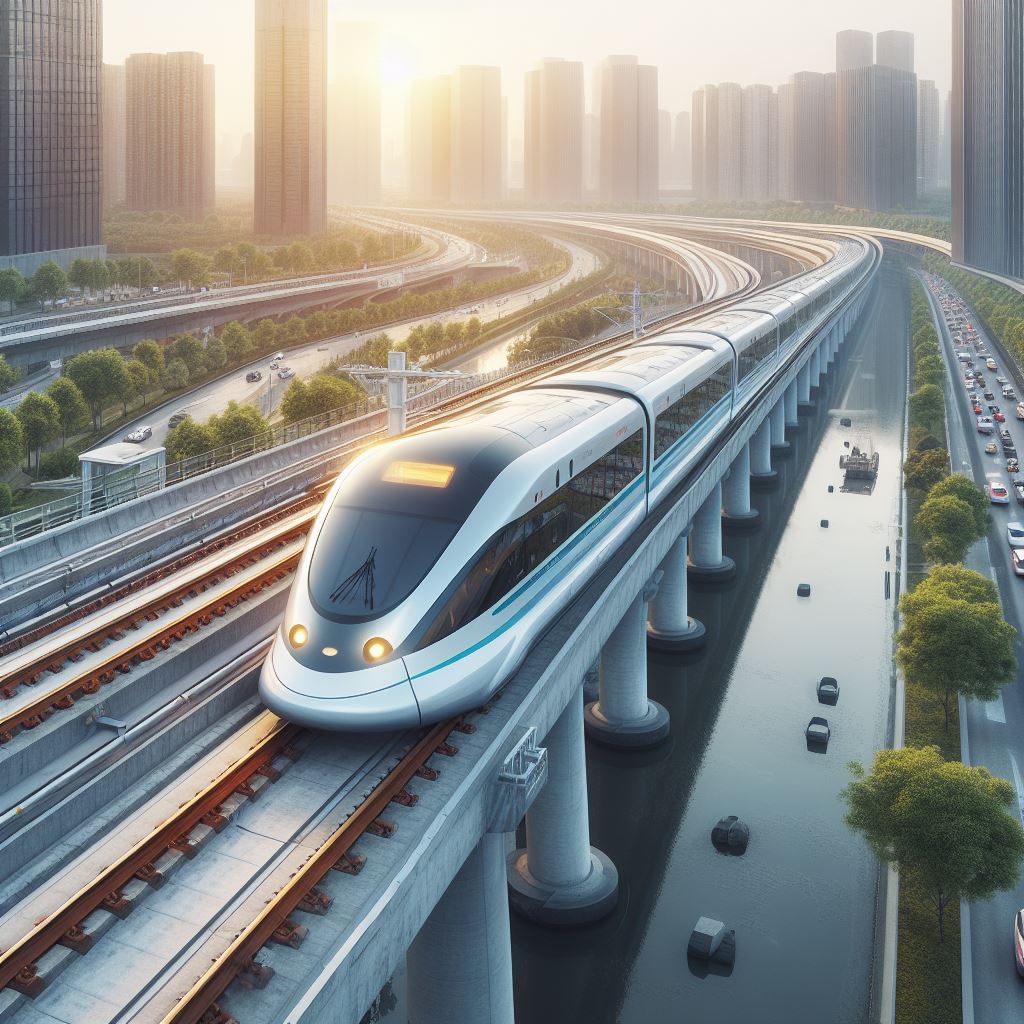For decades, the realm of high-speed rail has been dominated by conventional wheel-on-rail technology. While reaching impressive speeds, these trains are limited by friction and the inherent complexities of mechanical systems. However, China has emerged as a frontrunner in a revolutionary transportation paradigm: magnetic levitation (Maglev) trains. By harnessing the power of electromagnetism, China is pioneering a future where frictionless travel becomes a reality.
This article delves into China’s mastery of Maglev technology, analyzing its scientific principles, engineering feats, and potential implications for global transportation. We’ll explore the current landscape of high-speed rail, contrasting it with the unique capabilities of Maglev systems. We’ll also examine the challenges China faces in implementing this technology on a wider scale, drawing parallels to the recent lawsuit against Apple in the Netherlands regarding “slow” iPhones.
The allure of Maglev: frictionless flight
Maglev trains operate on the fundamental principle of electromagnetism. Powerful electromagnets embedded in the train’s undercarriage interact with magnets placed along the guideway, generating repulsive and attractive forces. This creates a magnetic field that levitates the train a short distance above the track, virtually eliminating friction. The absence of friction allows Maglev trains to achieve significantly higher speeds compared to conventional high-speed rail (HSR) systems.
China’s recently unveiled high-speed Maglev prototype boasts a theoretical top speed of 600 kilometers per hour (km/h) – a staggering feat compared to the current record of 350 km/h held by Japan’s Shinkansen bullet trains. This translates to drastically reduced travel times between major cities, potentially revolutionizing regional connectivity.
Advantages of Maglev
The benefits of Maglev technology extend far beyond raw speed. Here’s a breakdown of some key advantages:
- Reduced energy consumption: Since Maglev trains experience minimal friction, they require less energy to maintain high speeds compared to conventional HSR. This translates to lower operational costs and a reduced environmental footprint.
- Smoother ride: The absence of friction also leads to an exceptionally smooth ride for passengers. This is particularly advantageous for high-speed travel, minimizing discomfort and potentially attracting a wider range of users.
- Lower maintenance needs: With fewer moving parts and no contact between the train and track, Maglev trains require less frequent maintenance, leading to increased system uptime and reduced operational costs.
- Improved safety: Maglev technology eliminates the risk of derailment due to track irregularities or human error. Additionally, the levitation system can be programmed to automatically adjust for earthquakes, enhancing passenger safety.

China’s rise as a Maglev leader
China’s advancements in Maglev technology are a culmination of decades of research and development. The country’s first commercial Maglev line, a 30-kilometer route connecting Shanghai Pudong International Airport with Longyang Road station, opened in 2004. This initial project served as a testing ground for further development.
China’s commitment to Maglev research is evident in its significant investments. Leading rolling stock manufacturer CRRC (China Railway Rolling Stock Corporation) has spearheaded Maglev development, collaborating with research institutions and universities to push the boundaries of the technology. This dedication is reflected in their recent unveiling of the aforementioned 600 km/h prototype, showcasing China’s ambition to become the global leader in Maglev transportation.
Challenges on the horizon
While China’s Maglev advancements are impressive, significant challenges remain before widespread adoption becomes a reality. Here are some key hurdles:
- High infrastructure costs: Building Maglev infrastructure is considerably more expensive compared to conventional rail lines. The complex guideway systems and powerful electromagnets required significantly increase upfront investment costs.
- Limited range: Current Maglev technology is best suited for short to medium-distance routes due to the high cost of infrastructure. Long-distance journeys may not be economically viable for some time.
- Integration with existing infrastructure: Maglev systems are not readily interoperable with existing conventional rail networks. This necessitates the development of transfer stations or entirely new Maglev networks, further adding to the cost.
- Environmental concerns: The construction of Maglev infrastructure can have significant environmental impacts, particularly regarding electromagnetic field (EMF) emissions and potential disruption to ecosystems. Careful planning and mitigation strategies are crucial.
A glimpse into the future
The challenges China faces in implementing Maglev technology mirror those faced by companies like Apple in their pursuit of constant innovation. The recent lawsuit filed by Dutch consumers against Apple regarding “slow” iPhones exemplifies the tension between cutting-edge technology and real-world practicality. While faster processors may be technologically impressive, consumers, in this case, are concerned about the trade-off between raw processing power and battery life. Similarly, China must carefully consider the trade-offs inherent in Maglev technology.
A sustainable path forward
Just as Apple needs to balance performance with user experience, China must find a sustainable path forward for Maglev. Here are some potential solutions:
- Public-private partnerships: Collaboration between government and private entities can share the financial burden of infrastructure development, making Maglev projects more economically feasible.
- Phased implementation: A gradual rollout of Maglev technology, starting with high-traffic corridors and gradually expanding the network, can minimize upfront costs and allow for iterative improvements.
- Technological advancements: Continued research and development in materials science and electromagnetism can lead to more cost-effective infrastructure and energy-efficient Maglev systems.
- Environmental impact mitigation: Rigorous environmental impact assessments and the adoption of mitigation strategies, such as burying guideways or using electromagnetic shielding, are crucial for responsible implementation.
A race for the future of transportation
China’s leadership in Maglev technology signifies a paradigm shift in the world of high-speed transportation. While challenges remain, the potential benefits of Maglev – from reduced travel times and environmental impact to a smoother and safer ride – are undeniable.
As China refines its Maglev technology and navigates the associated challenges, other nations are sure to follow suit. This race for Maglev supremacy could potentially reshape global transportation networks, revolutionizing the way we travel and connect across vast distances. The journey towards a future powered by magnetic levitation has begun, and China is at the forefront. Whether this technology becomes the dominant mode of high-speed travel or remains a niche solution hinges on China’s ability to overcome the hurdles and strike a balance between technological prowess, economic feasibility, and environmental responsibility. Only time will tell if China’s Maglev mastery will pave the way for a frictionless future of transportation.
Photo credit: René Cortin – Flickr – Wikimedia Commons
https://www.youtube.com/watch?v=SQtJw1cIGOk

